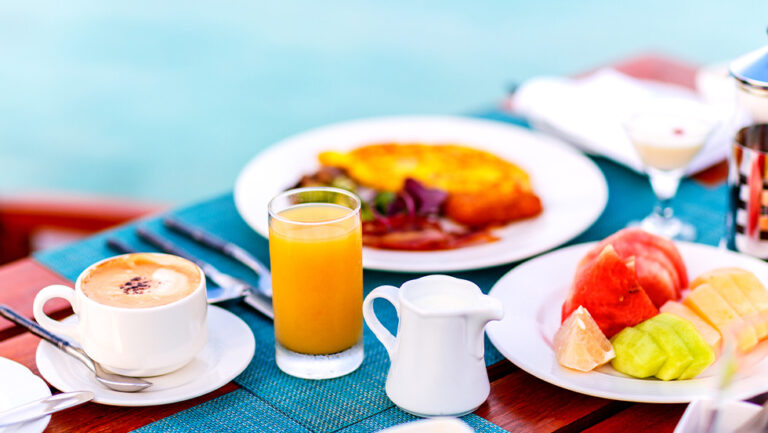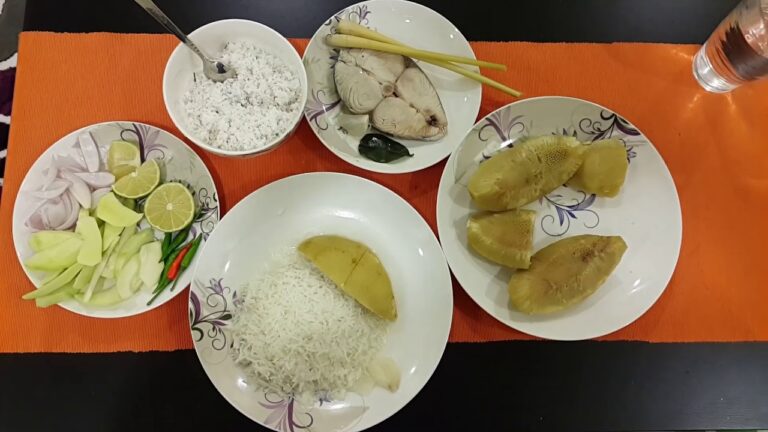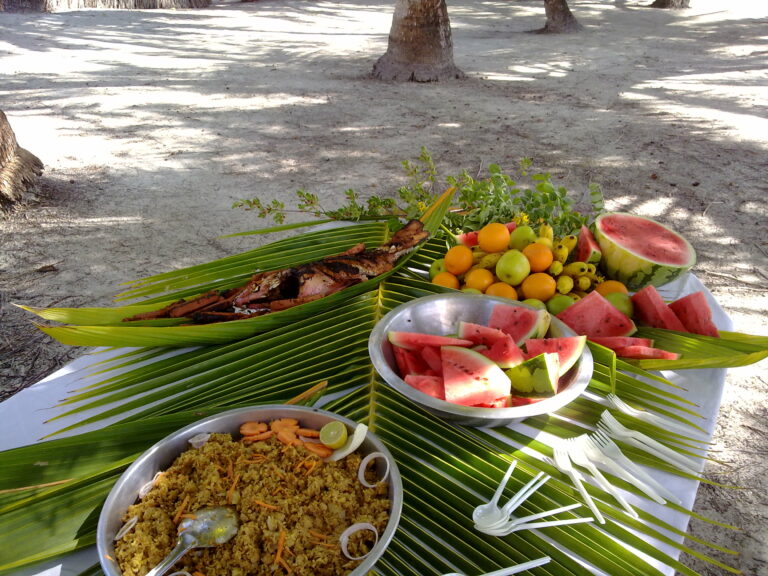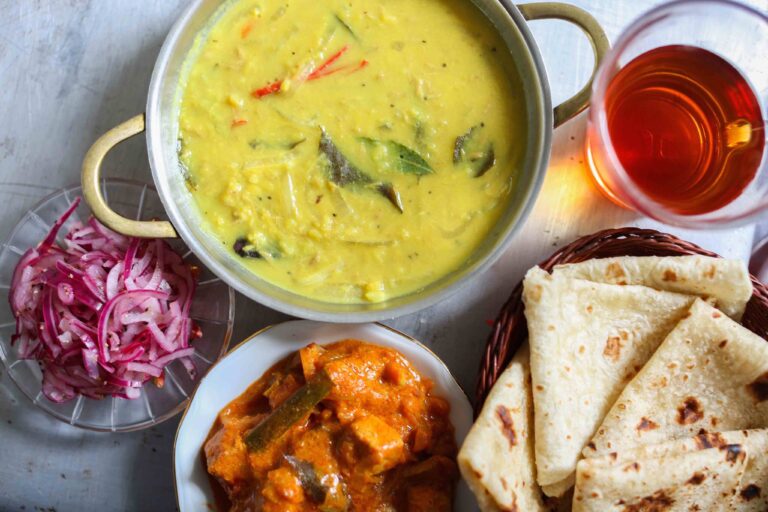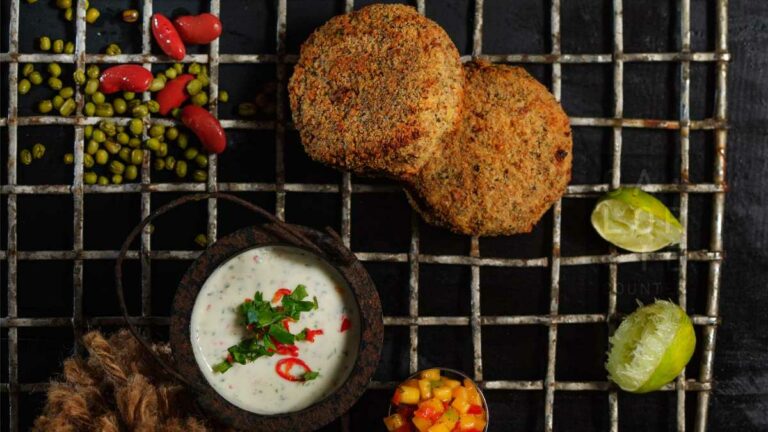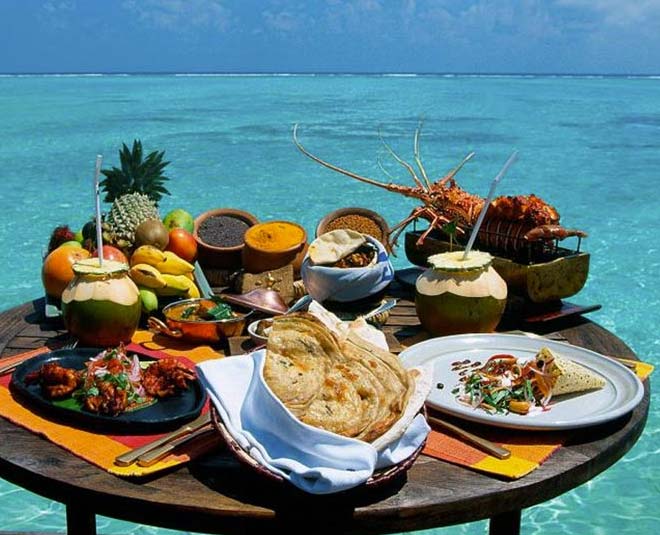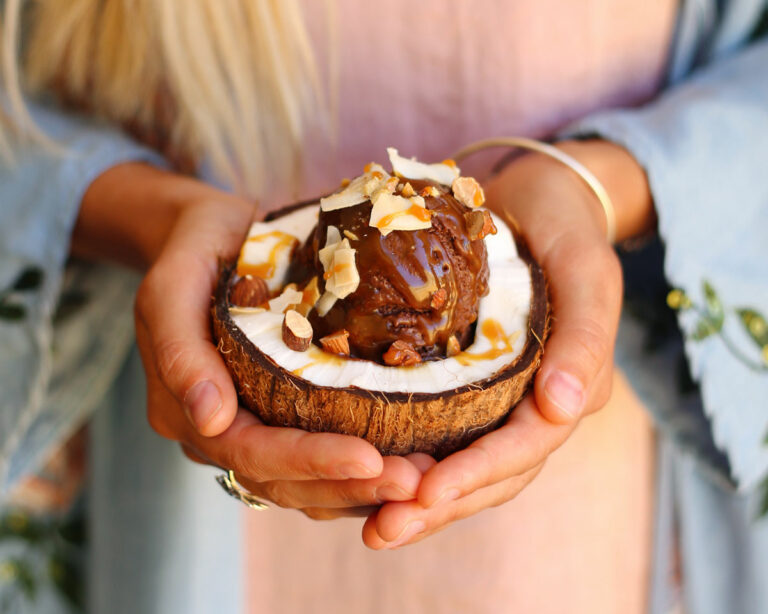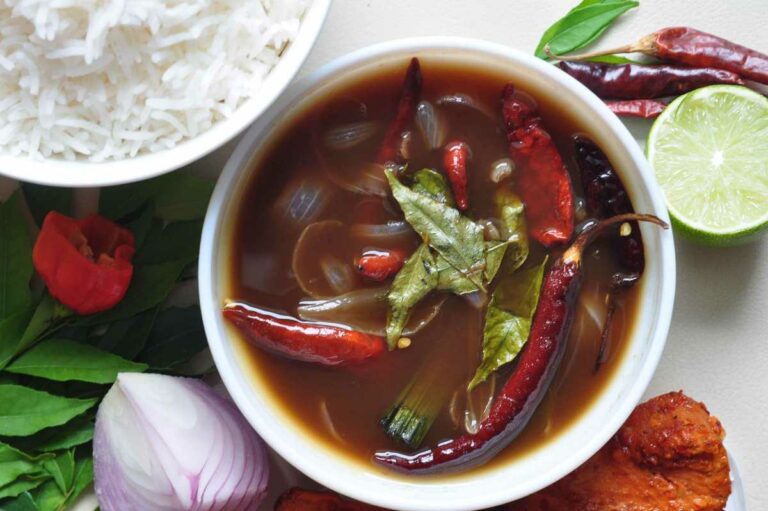Introduction: Discovering Maldivian Breakfast
The Maldives, an archipelago located in the Indian Ocean, is known for its pristine beaches, crystal-clear waters, and luxurious resorts. However, what many travelers often overlook is the country’s unique culinary scene, particularly its breakfast offerings. Maldivian breakfast is a blend of various influences, including Indian, Sri Lankan, Arabic, and Southeast Asian flavors, resulting in a diverse and delicious cuisine.
Staple Dishes: Traditional Maldivian Breakfast
One of the signature dishes in a Maldivian breakfast is mas huni, a tuna salad made with shredded coconut, onions, and chili. The salad is typically eaten with roshi, a type of flatbread similar to Indian roti. Another popular dish is kiru boakibaa, a savory pancake made with rice flour, coconut, and tuna. Other staple dishes include masroshi, which is roshi stuffed with spiced tuna, and bajiya, a deep-fried pastry filled with fish or vegetables.
Savory Delights: Maldivian Breakfast Snacks
Apart from the staple dishes, Maldivian breakfast also offers a variety of savory snacks. One of these is kulhi boakibaa, a deep-fried pastry made with fish and spices. Another is keemia, a crispy fried spring roll filled with chicken or fish. Samosas are also a popular snack, typically filled with spiced potatoes or tuna. These savory delights are often accompanied by a cup of black tea or coffee.
Sweet Treats: Desserts and Beverages
For those with a sweet tooth, the Maldivian breakfast scene offers a range of delicious desserts and beverages. Masroshi is often served with a sweetened, milky tea called sai, while boshi mashuni, a fruit salad made with coconut milk, is a refreshing and sweet option. Additionally, bondi, a sweet coconut cake, is a favorite among locals and tourists alike. Many breakfast spots also offer freshly squeezed fruit juices and smoothies.
Common Ingredients: Maldivian Breakfast Ingredients
The Maldivian breakfast scene is heavily reliant on seafood, particularly tuna. Coconut is another key ingredient in many breakfast dishes, as well as spices such as chili, cumin, and ginger. Rice flour is also a common staple, used in dishes such as kiru boakibaa. Vegetables like onions and curry leaves are incorporated for flavor and nutrition.
Modern Twists: Fusion Maldivian Breakfast
As the Maldives continues to attract tourists from all over the world, many modern twists on traditional Maldivian breakfast have emerged. For example, some cafes and restaurants now offer western-style breakfast options, such as pancakes and omelets. Additionally, fusion dishes that combine Maldivian and international flavors have become popular, such as avocado mas huni and banana roshi. These modern twists provide a unique and exciting twist to the traditional Maldivian breakfast experience.

